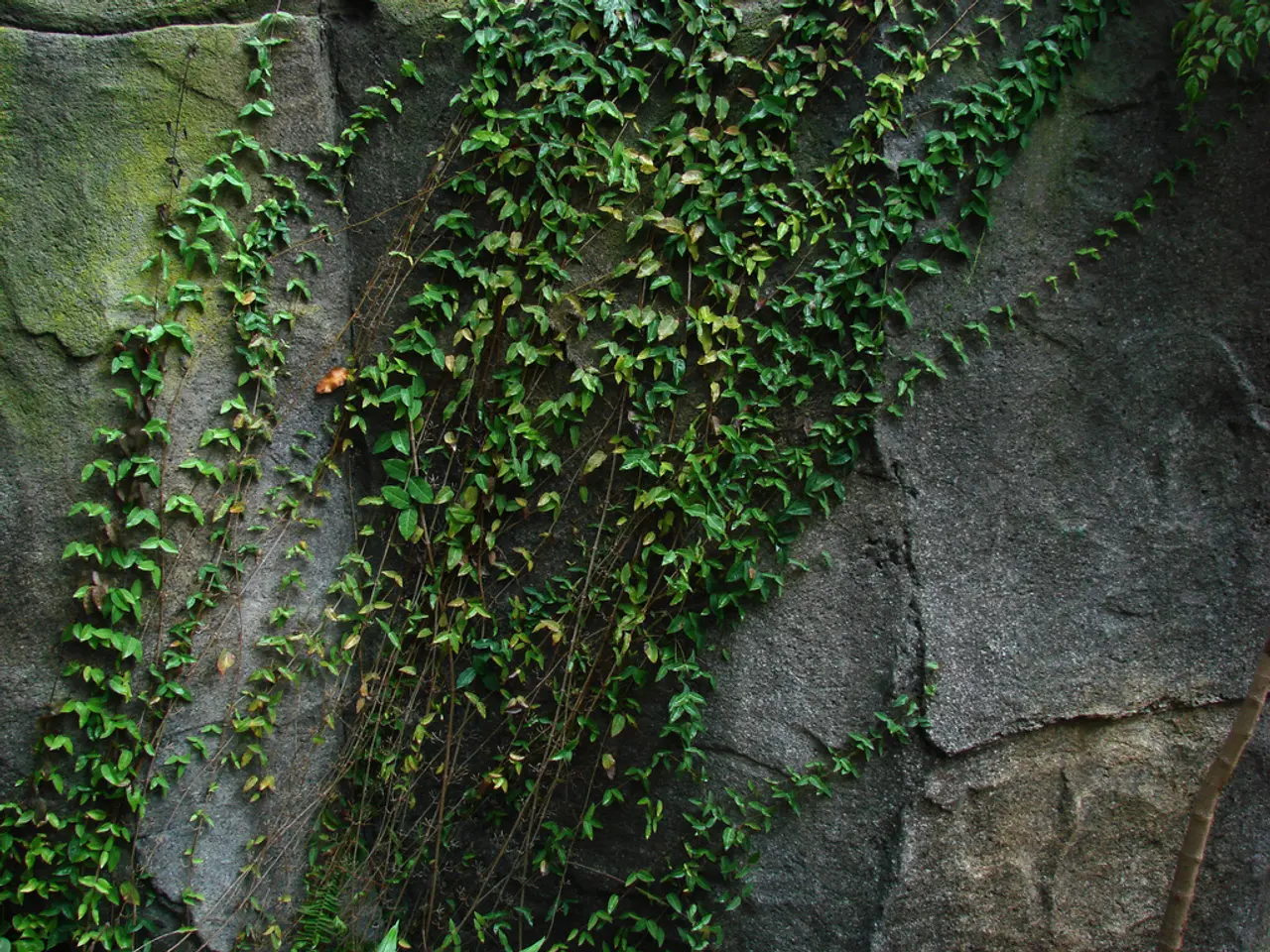Can it be acceptable to paint over green algae on a fence? Professionals share their views on the feasibility of this practice
In the world of gardening, green algae on fences can be a common issue, especially for those with north-facing or shaded fences. Angela Slater, a gardening expert at Hayes Garden World, explains that this unwelcome growth is caused by a lack of sunlight, cool air, and poor air circulation.
To effectively remove and prevent green algae growth, follow these steps:
**Removal Process**
1. Clean the surface thoroughly before painting. Mix equal parts white vinegar and warm water, apply generously to the fence, and let it sit for a few hours to break down the algae. Scrub the fence with a stiff-bristled brush, especially in crevices, and rinse thoroughly with water after scrubbing.
2. For stubborn algae spots, consider using a bleach solution (1 part bleach to 3 parts water). Spray or brush on the mixture, rinse well, and wear gloves when handling bleach to protect yourself.
3. Pressure washing can also be effective. Use a fan-tip nozzle at low to medium pressure, keep the nozzle 12 inches away from the fence, and use sweeping motions to avoid wood damage.
**Prevention Tips**
1. Improve drying and reduce moisture. Ensure the fence has a slight slope for water runoff, keep gutters clean to avoid water dripping onto the fence, and add a gravel or stone drainage layer if applicable.
2. Increase sunlight and airflow. Trim nearby trees or bushes to reduce shade and promote drying, as sunlight inhibits algae growth by reducing moisture retention.
3. Apply algae-resistant sealants or stains. Use products labeled “mold- and mildew-resistant” or containing algae inhibitors. These coatings repel moisture and prevent organic growth on the fence wood.
4. Maintain regular cleaning year-round. Sweep or brush the fence weekly to remove debris, rinse the fence after heavy storms, and perform deeper cleans seasonally to keep the surface algae-free.
By combining thorough cleaning with targeted prevention—managing moisture, sunlight, and protective coatings—you will best prepare your fence for repainting and reduce future algae growth effectively.
Jimmy, the Senior Brand Manager at Ronseal, the UK’s number one woodcare brand, suggests a cool pine shade treatment for those seeking a fence colour treatment outside the usual woodish browns. This treatment strengthens the wood's resistance to water and other weather conditions.
It's essential to remember that green patches on a fence can be covered up by painting, but the organism may still be present. Therefore, cleaning a fence before painting it is a necessary step to ensure a good surface for the paint to adhere to.
Angela Slater warns that algae is attracted to damp conditions and can cause wood rot and decay. If you have climbing fence plants or shade from trees, it will encourage the formation of mould. To prevent this, consider planting a fast-growing hedge as an alternative to fence maintenance.
Avoid using bleach to clean mould as it can damage nearby plants, wildlife, and the wood itself. Instead, opt for a solution of white vinegar and warm water for a safer and more effective clean.
With these tips in mind, you can keep your garden fence looking its best and algae-free. Happy gardening!
- To further enhance your garden lifestyle, consider incorporating an extension project that includes building a roofed home-and-garden storage shed, as it can provide additional drying and aeration space for fences, reducing the likelihood ofgreen algae growth.
- Encourage the adoption of sustainable home-improvement practices by guiding your friends and family to choose homemade organic cleaners, such as mixtures of baking soda and water or vinegar and water, for cleaning and maintaining their fences and other home exterior surfaces, promoting eco-friendliness and prevention of toxic runoff.
- Curate a collection of home-improvement ideas showcasing different techniques for installing roof vents or gable vents on your home and fence structures, allowing for better air circulation, reduced moisture accumulation, and the prevention of algae growth on your fences and roofing materials.
- Incorporate the concept of green gardening and urban farming into your yard by creating a vertical farm system with shelves equipped to grow various herbs, vegetables, and even small fruits on your fence, shading it from the sun, and promoting a healthier, more environmentally-friendly lifestyle while also reducing its algae potential.
- As a responsible homeowner, continually browse home-improvement marketplaces for innovative products that cater to the dual needs of protecting your home and minimizing environmental impact, such as eco-friendly, algae-resistant paints or stains, which may reduce the need for chemical solutions like bleach and maintain your home's aesthetic appeal.




